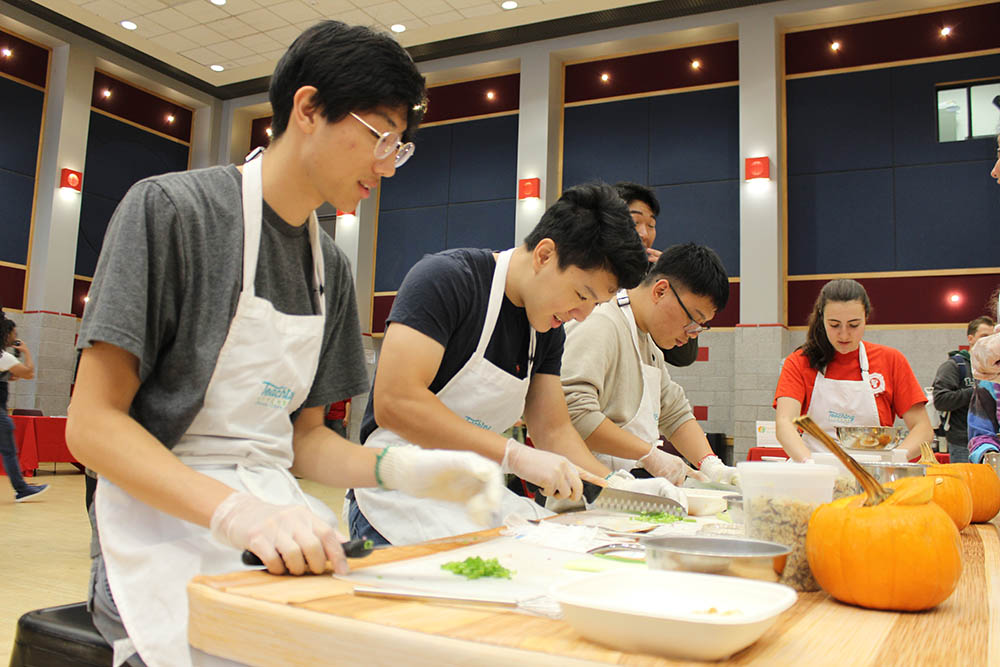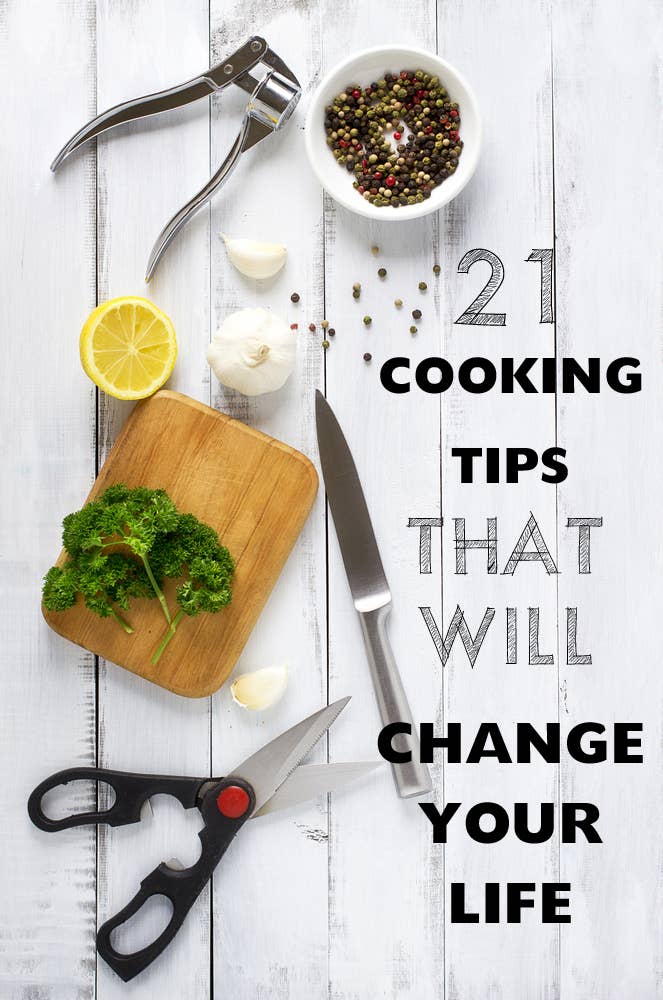
Here are some tips to help you become a better chef. First, always prepare the ingredients properly. Invest in good kitchen utensils. Also, be sure to read every step of the recipe carefully in order to avoid any burns. Finally, remember to always read the ingredients label. If you follow these tips, your kitchen will be well-prepared. Here are some other cooking tips that will help beginners. You'll soon be an accomplished chef.
Preparation of the ingredients before you start cooking
It can be very time-saving for novice chefs to prepare before they cook. Depending upon how much time you have, it may be wise to make a few stovetop meals per days and include some non-cooking dishes. Once you have your kitchen set up, you can begin cooking your first meal, usually the one that takes the longest. This could include a soup recipe, an oven, or a casserole. The cold meals can, however, be prepared while the rest if the meal is in oven.
Proper kitchen equipment
You will need basic kitchen equipment, no matter if you are a home cook or a casual home chef. Essential cooking utensils make up the majority of your essential kitchen equipment. A nonstick pan is a must-have because they are low-maintenance and forgiving. For egg frying, it's a good idea that you get a quality nonstick skillet. A flat wooden spoon can be useful for many purposes.

Avoiding burns
A kitchen can present a danger because of the possibility of getting burned. It is important to be cautious when handling hot pots or boiling waters to avoid being burned. Most burns can be treated at-home, but some may prove fatal. These accidents can be avoided if we follow some basic guidelines. These tips can help you stay safe when cooking. You will be a better cook for it!
Take the time to read the recipe.
It doesn't matter if you are a professional chef or a novice cook, it is important to read the entire recipe. A good recipe should simplify the process of cooking. You can have stress-free cooking by reading through the recipe. These are some helpful tips for carefully reading the recipe. Below are some key tips for beginning cooks. The recipe should be read carefully to ensure that the final results are as good as the author describes.
Avoid overcrowding the pot
It is a good idea to not overload a pan while cooking. The first is that it will lower the heat of the pan. It won't brown the food as fast or let go of its moisture. Second, overcrowding the pan will result in bland food. If you have trouble releasing food from the pan, try using a spoon to remove excess food from the pan. If all else fails, avoid overcrowding the pan and you'll have delicious, tender food every time.

Trust your instincts
The best rule of thumb is trusting your instincts, especially those that come from your gut. These instincts may not be perfect. Intuition is a skill that your right brain has developed through experience, which can lead to a suspicion of something or someone unfamiliar. However, you must balance your intuition with your linear brain to weigh the options. These are some tips to help you strengthen your gut instinct.
FAQ
How do I get hired to cook?
Word of mouth can help you get a job as an experienced cook. A friend or family member might know of an open restaurant that is in desperate need of staff. Also, restaurants often advertise openings on bulletin boards and websites.
What are the Qualifications to be a Chef
To become a chef, you must have a bachelor's degree in culinary arts. A series of tests must be passed by the ACF. After you have completed all requirements, you will receive a certificate confirming your qualifications.
Which is the best method to store leftovers?
Tupperware containers are great for storing leftovers. These containers keep foods fresh and prevent odors from forming. They also keep foods warm for longer. Freezer bags can be used to freeze any leftover food. When freezing food, place the bag inside another freezer bag so that air doesn't escape. Once the food has frozen, you can transfer it to an airtight container like a zipper lock bag.
How Do I Learn About Cooking?
There are numerous cooking classes offered across the country. There are many schools that offer courses in pastry, baking, and wine tasting. You can learn more about how to cook by enrolling in a class at either a local vocational school or community college.
Is there a better way to learn to make delicious meals?
Cooking is a skill that every person should learn. You'll miss out on delicious meals if your skills are not up to par. When learning how to cook, the first thing to do is find a recipe you love and follow it closely. The next step is to practice making small modifications to the recipe until it becomes second nature. Next, you can cook for others. This will improve your cooking skills as well as test your culinary abilities.
What should a beginner chef learn?
A beginner should start cooking something easy, like pasta, rice, or soup. Learn how to cook with a recipe book, YouTube video or other resources. Cooking can be fun when done with a partner. Try cooking together as a family, or have friends share the experience.
What skills is required to attend culinary school
You will need to know how to cook, understand food safety regulations, and be able work under pressure in order to become a chef. You should enroll in cooking classes at local community colleges or high schools to learn how to cook. Once you have mastered the basics of cooking, you will need to find work in a restaurant and catering company.
Statistics
- On average, chefs earn $58,740 a year, according to the BLS. - learnhowtobecome.org
- In the United States, the category is estimated at $23.2 billion annually and is growing faster than the market. (washingtonpost.com)
- The median pay for a chef or head cook is $53,380 per year or $25.66/hour, according to the U.S. Bureau of Labor Statistics (BLS). (learnhowtobecome.org)
External Links
How To
How to make a perfect Omelette
Omelets are one of my favorite foods to eat at breakfast. How do you make them perfect? Many different recipes and methods have failed to work for me. Today, I'd like to share some tips with you in order to make delicious and fluffy omelets every day.
It is important to know that eggs can be temperamental when making omelets. The eggs must be fresh from an organic source and kept at room temperature until they are ready to be cooked. They must be kept cool, otherwise the whites will not form properly and the yolks may become runny. This will make your omelets appear strangely colored. If you want to make omelets right away, it's best not to use eggs that are too cold.
Another tip is to separate your egg before adding it into the pan. The yolk and white should not be mixed together as this can cause the omelet's curdle.
The bottom part of an egg that is added directly to the stovetop might be burned, which could cause a ruined texture in your omelet. Instead, heat the egg for 10 seconds in the microwave before placing it in the pan. The microwave heat will cook the egg just right without making it too hot.
Next, let’s talk about mixing the egg. You want to mix the eggs thoroughly before you add them. You can do this by turning the bowl of your mixer upside down. Next, shake the bowl vigorously. By doing this, the egg is thoroughly mixed with the air in the bowl.
Now it's time to have fun: pour the milk into the mixture. The first step is to pour half of the milk in the beaten eggs. Next, fold the eggs into the remaining milk. If you still see streaks of eggs, don't worry. These streaks will disappear once the omelet has been turned over.
After you have folded the eggs, heat the oil in a pan over medium heat. Once the oil has started to sizzle, turn the heat down to low. When the oil is hot enough, add 1/4 cup butter to the pan. Stir it around until the butter covers the entire pan. Carefully open the pan's lid and add salt to the pan. Salt will prevent the omelet sticking to the pan.
Cover the pan once you have formed the omelet. Wait for the top to set. Flip the omelet over using a spatula or flip the pan upside down. Cook the other side for another minute or two. Take the omelet out of the pan and immediately serve.
This recipe is best made with whole milk. However, it can also be used with skimmed milk.